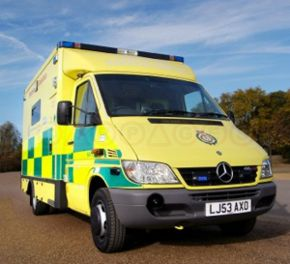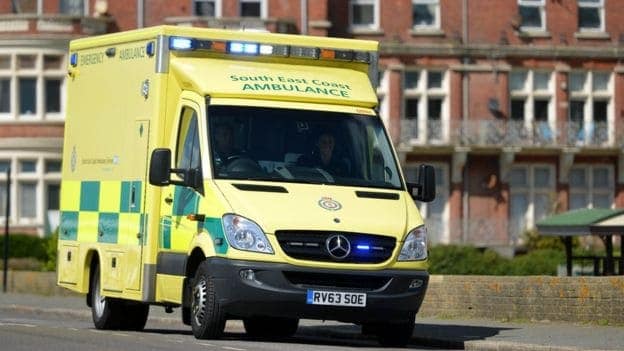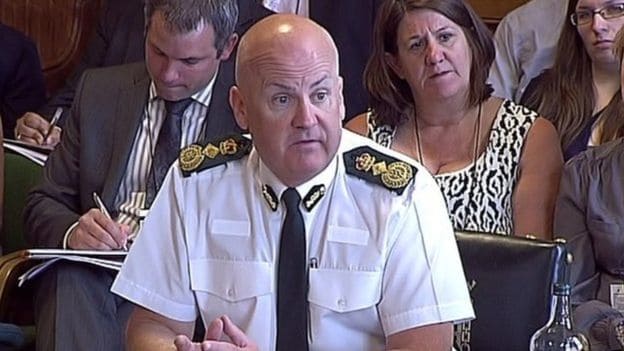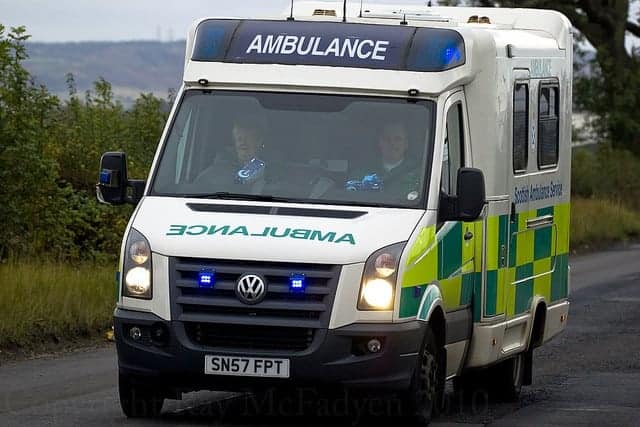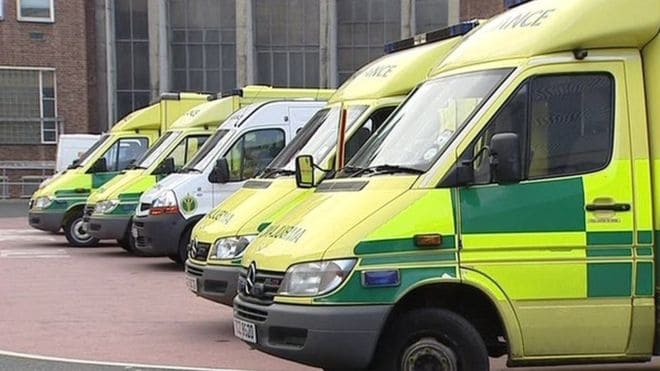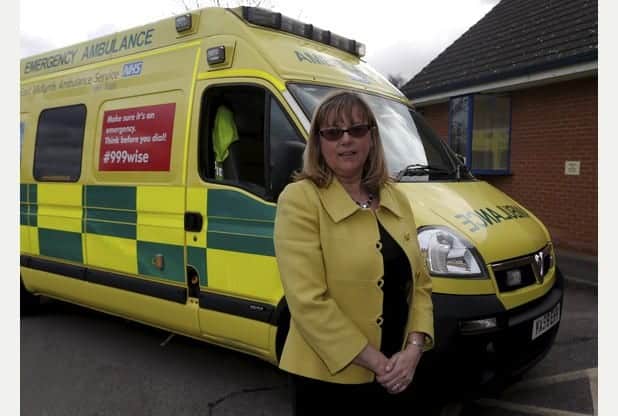
Dr Glyn Phillips and Professor John Ashton were both at the FA Cup semi-final as Liverpool FC fans

Professor John Ashton and Dr Glyn Phillips who both gave evidence at the Hillsborough inquests
When Lord Justice Taylor published his interim report on the Hillsborough disaster in 1989 he exonerated the emergency services.
He dismissed the opinions of two Merseyside doctors who had been at the match as fans – the only two Taylor inquiry witnesses to criticise the South Yorkshire Metropolitan Ambulance Service (SYMAS) response on the day.
More than 25 years later those two doctors – Dr Glyn Phillips and Professor John Ashton – gave evidence to the new inquests into the 96 deaths, where the ambulance service admitted delays in their actions on the day.
The inquests found that SYMAS made errors which “caused or contributed” to the loss of lives in the disaster, after the crush in the had begun to develop.
They concluded: “SYMAS officers at the scene failed to ascertain the nature of the problem at Leppings Lane. The failure to recognise and call a Major Incident led to delays in responses to the emergency.”
Yesterday’s findings led to the current head of Yorkshire ambulance service , Rod Barnes, issuing an apology and admitting that lives could have been saved at Hillsborough if its response had been different.
Criminal charges could now follow
The ECHO spoke to both Dr Phillips and Professor Ashton bout how it felt to hear their evidence validated more than two decades on.
DR GLYN PHILLIPS
Dr Glyn Phillips, a GP originally from Huyton but living in Scotland at the time, was in pen three of the Leppings Lane terrace with his younger brother and two friends for the FA Cup semi-final on April 15, 1989.
After managing to climb into a side pen, he jumped up through a gate onto the pitch, cutting his head in the process.
Once on the field, Dr Phillips successfully resuscitated 18-year-old fan Gary Currie – who was believed to be in cardiac arrest but went on to survive.
Dr Phillips, who is still in touch with Gary and his family today, said: “Gary was incredibly lucky to be found on the pitch very quickly by somebody who knew CPR and somebody who knew you had to keep it going for a decent length of time.
“In that sense he was he was so fortunate and I just feel saddened that many more of the the other victims weren’t as fortunate, in terms of the time it took to get out of the crush.”
He added: “My experience with Gary has provided perhaps the exemplar of what could have happened if some of the others had been treated like that.
“Importantly, it totally undermined and disproved the 3.15pm cut off time used in the original inquests.
“If that’s my contribution to the families’ case then I’m glad I have been able to make it.”
In the months after the disaster, he gave evidence to the Taylor inquiry but said barrister Michael Kallipetis, representing South Yorkshire Ambulance Service, attempted to discredit him.
He said: “I was just disgusted by the whole process.
“I thought we were there to find out what happened to the poor, innocent people who died.”
Dr Phillips told the Taylor Inquiry an oxygen cylinder he was handed was empty, but in Lord Justice Taylor’s interim report the judge said St John Ambulance divisional superintendent Peter Wells had described taking the oxygen cylinder to Mr Phillips and said it was full and working.
But the new inquests were shown footage of Dr Phillips being handed the cylinder by a police officer, not Mr Wells.
Lord Justice Taylor wrote: “In my view, Dr Phillips may have been mistaken as to the cylinder of which he complains being empty.
“He agreed he was under great pressure, in an awkward situation; his head was injured and he became very angry at what he regarded then as wholly the fault of the police.”
Lord Justice Taylor also disagreed with Dr Phillips’ view that there should have been defibrillators at the ground.
Dr Phillips said: “I felt let down by the process and reading Lord Justice Taylor’s report but by then we had had all these allegations about fans and what did we expect?”
The retired GP said he felt a “joyless vindication” following the evidence which came out at the inquests.
He said: “I was not only at the match but I was in pen three with my friends and my brother so I knew how bad it was – we didn’t imagine it was that bad, it was that bad.”
He said he had expected to be called to the original inquests, which started in 1990.
He said: “I expected to be called because I think it was the proper thing to happen and I also expected John Ashton to be called.
“Paradoxically, I had the feeling neither of us would be called.
“Clearly we were persona non grata with regard to the various authorities in Sheffield.
“I discovered relatively recently that the coroner was specifically asked by Doreen and Les Jones, who wrote to him asking whether we could appear.
“He replied and had clearly made his decision not to call us.
“I think that was a serious error of judgment on his part.
“It was frustrating but nowhere near as upsetting and frustrating as it must have been for the families.”
He added: “I cannot fathom why he didn’t call us, other than he specifically did not want to hear our evidence, in which case the first inquests were coloured and flawed before they even started.”
PROFESSOR JOHN ASHTON
Professor John Ashton, now President of the Faculty of Public Health, was a lecturer in public health in 1989, as well as a Liverpool fan.
He was sitting in the West Stand, above the terraces where the fatal crush happened, with his two sons and nephew and went to the inner concourse after a call for doctors in the stadium,
Prof Ashton, who worked to establish a triage system in the area behind the stand, gave a number of radio and television interviews after the disaster in which he criticised the emergency response.
He went on to give evidence to the Taylor Inquiry, but said his experience there made him apprehensive about appearing at the inquests in Birchwood Park, Warrington.
He said: “At the Taylor Inquiry I was given no briefing, no coaching, no mentoring and I didn’t know what to expect.
“I felt like I went into the lion’s den.”
He added: “I naively walked in thinking that I knew what I saw and what I did and I would turn up and tell them the story, but they tried to rubbish it.”
He said he was also criticised for his media interviews.
He said: “They tried to make out I was a publicity seeker and it was all about ego.
“I was doing what I felt was my responsibility – to tell the truth.”
In his interim report Lord Justice Taylor said: “The only attack on SYMAS came from two Liverpool doctors.
“One claimed that ambulances did not arrive swiftly or with sufficient equipment and that there was a lack of triage. He was proved to be wrong in all three respects.
“Unfortunately he had seen fit to go on television on 15 April when he said more lives could have been saved if staff and equipment had arrived earlier.”
Prof Ashton said: “I had to live with that for 23 years, the idea that I’m not reliable, that I’m making things up and I’m an attention seeker.
“That was the draft of the report and in a sense it blemished my character as a doctor.”
He added: “People ask me if it affected my career and I have thought about that quite a lot.
“I’ve had a good career and a very satisfying career but I was never considered for the job of chief medical officer of England – I wasn’t even longlisted for it.
“I think my card was marked nationally in that sense because I was regarded as a loose cannon and unreliable.”
After the Taylor Inquiry, Prof Ashton had expected to be called to appear at the original inquests.
He said: “I was surprised that I wasn’t called but by that time I was very bruised by my experience at the Taylor Inquiry.
“I can’t remember now the circumstances when I found out I wouldn’t be called to the inquests but it was because of the perverse decision not to take evidence after 3.15pm.”
After that, he said, said he rarely spoke about the disaster.
He said: “Everyone deals with this kind of thing themselves and personally, once the immediate aftermath was over – it took over my life for three or four weeks – after that I didn’t really talk about it.”
He added: “It has been very emotional to go through it all again and I hope that, for so many people involved with this, the end of the inquests can allow them to begin to get on with their lives.”
He added: “In any large scale disaster you make sense of it through the story of one person and for me that person was Philip Hammond.
“He was 14 and he was the same age as my son, Nick.
“They went to school together and were in the same football team.
“To see my own son at the stage in his life he is now does make me think about Philip.”
Following the panel report and the new inquests, Prof Ashton said he felt vindicated.
He said: “But I’ve always said that this is not about me, it has always been about the families.
“It’s a question of how the families can get some comfort and the beginnings of peace of mind.”
Like this:
Like Loading...
